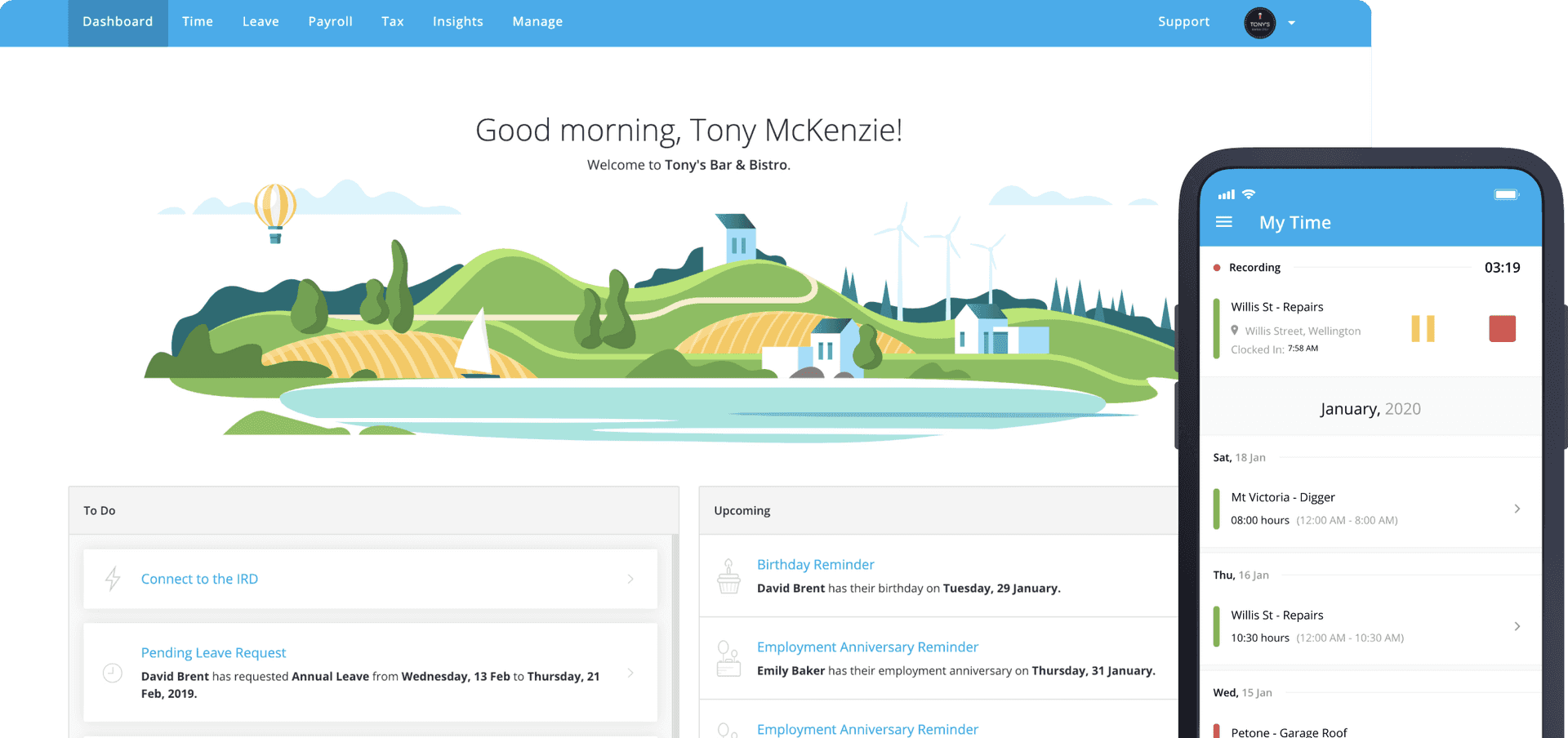Holidays Act
KISS My BAPS
March 26, 2015
KISS stands for Keep It Simple Stupid. It came into use in the US Navy in the ’60s. The principle behind it is that systems work best if they are kept simple rather than made complicated. And that’s an approach we’d like to see applied to the Holidays Act.
In this previous blog I described an alternative approach to annual leave that requires tracking two values only – the quantity of leave (in whatever units you choose) and the value of leave.
That’s all well and good, but we’re still left with the BAPS leave types (Bereavement, Alternate Leave, Public Holiday, Sick Leave). Let’s see how we could extend the same approach to these leave types.
The BAPS leave types are paid at an employee’s relevant daily pay. If it’s “not possible or not practicable” to calculate this then you must use the Average Daily Pay. Like the calculation for Annual Leave, this requires a rolling 12 months of earnings and days worked. It can lead to fascicle situations like this one.
We’ll start with the AP of BAPS (and address the BS in a future blog). Alternate Leave and Public Holiday two sides of the same coin. There are 11 public holidays a year. Now that all holidays are “Mondayised” this is consistently the case for full time employees. If an employee doesn’t work on a public holiday they get paid for that day. If they do they get an alternate day to be taken and paid at a later date.
Whether you get either of these also depends on your working days, which can be contentious, particularly for part time workers. Consider a situation where Liz and John do the same job; Liz works Tuesdays and Wednesdays, while John works Thursdays and Fridays. They both take the weeks of Christmas and New Year 2014/15 off, yet Liz has to take 4 days of annual leave while John doesn’t have to touch his leave since he has paid public holidays on the days he works. That doesn’t seem fair to me.
Why not just apportion and accrue the public holidays in the same way as annual leave, where a % of an employees earnings go towards their public holidays, and they also get a similar proportion of days/hours/units. And while we’re doing that, why not combine with the annual leave balances to keep things really simple.
A quick bit of maths. In a 52 week year, for a regular Monday to Friday employee, there are 52 x 5 = 260 working days. Four weeks, or twenty days are annual leave. Eleven days are public holidays. So that makes 31 days of leave a year. 31 / 260 = 11.92%. That’s just a couple of hours short of 12%.
So lets just put aside 12% of everyone’s earnings for annual leave and public holidays, with a similar 12% of the units they work held as their balance. Whether an employee is taking public holidays or annual leave it doesn’t matter.
If someone works on a public holiday they don’t get any special type of leave – they just don’t need to use any of their leave. There’s no more controversy over whether a public holiday is an otherwise working day or not.
The case of Liz and John above now works out to be perfectly fair – they receive the same (higher) amount of leave and have to take the same number of days.
What if someone doesn’t have sufficient leave saved up when a public holiday comes around. in particular if an employee has started just before a public holiday, what will they get paid?
This is already a problematic area. Small businesses will often hold off from employing people just before the Christmas and January public holidays. And there’s a reason why lay-offs and redundancies so often kick in just before the Christmas break. The single 12% accrual goes some way to removing these timing issues.
If an employee who has just started can’t cover their holiday then there are two options:
1) They take unpaid leave. But they’re not missing out – they’re still accruing the same amount of leave throughout the year. If they were to be employed for exactly a year, taking all the other public holidays and annual leave, then when they left they would end up being paid out one days leave for that initial public holiday, since that leave has finally been accrued.
2) If the employer agrees they take leave in advance. Given that at 12% it takes only about 9 days to accrue a day of leave they’re not going to be in arrears for long.
If someone could get this simplified approach into law then I’d be happy to give them a big KISS.
(In the next Holidays Act blog we’ll look closer at this approach and see just how much simpler and fairer it is.)







